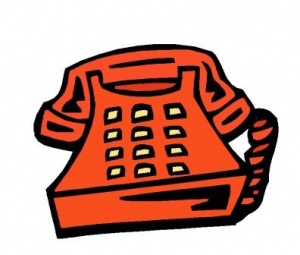FRANKFORT, Ky. (Dec. 17, 2012) – A new area code 364 in western Kentucky will occupy the same geographic area as the current area code 270, the Kentucky Public Service Commission (PSC) announced today.
The overlay option is the least disruptive for all customers and imposes the smallest cost on businesses in the area, the PSC said in its order. This is the first area code in Kentucky created by an overlay. Area code 270 was created in 1999 by splitting area code 502.
“This decision means that everyone who now has an area code 270 phone number can keep that number,” PSC Chairman David Armstrong said. “The only thing that will change is that 10-digit dialing will be required for local calls beginning in early 2014.”
Ten-digit dialing means that an area code must precede the seven-digit phone number for all local calls within the current area code 270 territory. Long-distance calls within area code 270 will require 11-digit (1 plus area code plus number) dialing, like any long-distance call to outside the area. Ten-digit dialing also will be required for all calls where local calling areas span the boundary between area code 270 and adjoining area codes.
With more than a year until final implementation, there will be ample time for a smooth transition that will allow everyone to become familiar with the new dialing rules, Armstrong said.
The PSC noted in its order that public comments received in the case overwhelmingly favored an overlay. The other option was to split area code 270 and designate a portion as area code 364, with both landline and wireless customers in the affected portion required to change their area code as a result.
“Public opinion has shifted dramatically in the six years since the PSC last considered this matter,” Armstrong said. “It appears that the public is much less concerned about 10-digit dialing than about the possibility of having to change phone numbers.”
Comments from the business community noted that a split would force businesses in the area receiving the new area code to change printed materials, signage and anything else bearing their phone number, the PSC said in its order.
In selecting an overlay, the PSC noted that it has become the preferred method for creating new area codes. Overlays pose the fewest technical issues for implementation by an increasing complex telecommunication industry, the PSC said.
Overlays have been used for all but one (in New Mexico) of the last 24 area codes created nationwide, the PSC noted in today’s order.
For example, the West Virginia Public Service Commission in 2008 at first opted to split the state’s sole area code. But opposition from the public – especially the business community – forced it to reverse course a month later and create a statewide overlay.
The Kentucky PSC was formally notified in April of the need for a new area code by the North American Numbering Plan Administrator (NANPA), the agency that distributes blocks of phone numbers to providers and tracks number exhaustion in area codes.
NANPA originally said a new area code would be needed in early 2015, but later revised that projection to early 2014.
“The need for a new area code is driven largely by demand for new numbers associated with wireless devices, but also is suggestive of increasing economic activity,” PSC Chairman Armstrong said. “As such, it is a positive development.”
The PSC opened the area code case in August. Public information sessions were conducted in October in Bowling Green, Elizabethtown, Glasgow, Henderson, Hopkinsville, Owensboro, and Paducah. PSC staff also spoke to civic or business organizations in Bowling Green, Elizabethtown, Henderson, Hopkinsville, Madisonville and Murray.
Today’s PSC order sets an implementation schedule for the overlay that extends over the next 13 months. Telecommunication providers are ordered to begin preparing their networks for the change no later than Feb. 2, 2013.
Landline and wireless local service providers also are required to prepare customer education plans, submit them to the PSC by mid-February and begin implementing those plans in February as well.
A permissive dialing period will begin on Aug. 3, 2013. During that time, calls may be made using either the current seven-digit dialing rules or the new 10-digit dialing rules.
The permissive dialing period is intended both as a transition period to the new dialing patterns and as an opportunity for private telephone systems to be reprogrammed and tested in preparation for mandatory 10-digit dialing.
Mandatory 10-digit dialing will go into effect on Feb. 1, 2014. At that point, calls using the current dialing rules will no longer be connected.
The first numbers using area code 364 may be assigned beginning March 3, 2014. Area code 270 numbers can be assigned after that date, but their availability will depend on how many remain in the inventory of each individual service provider. |







